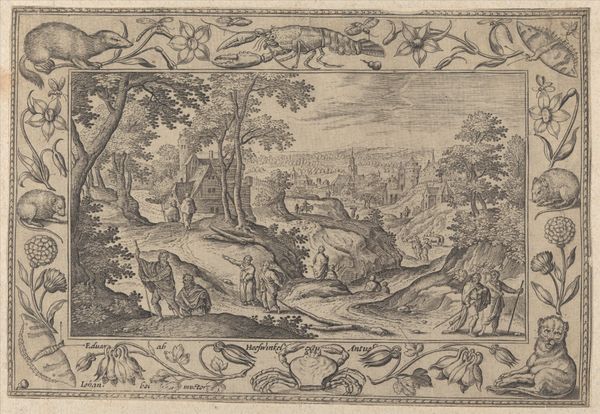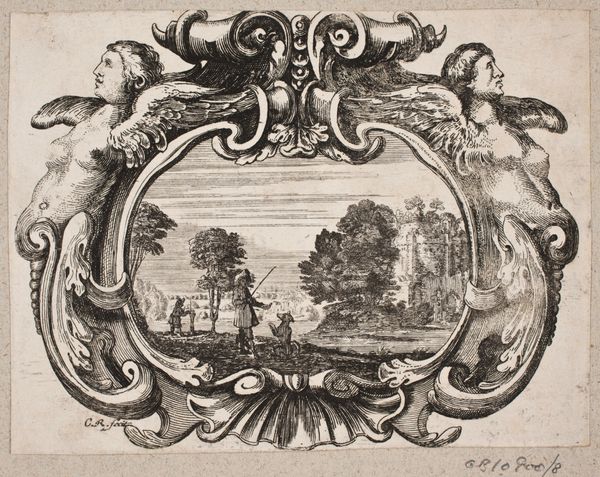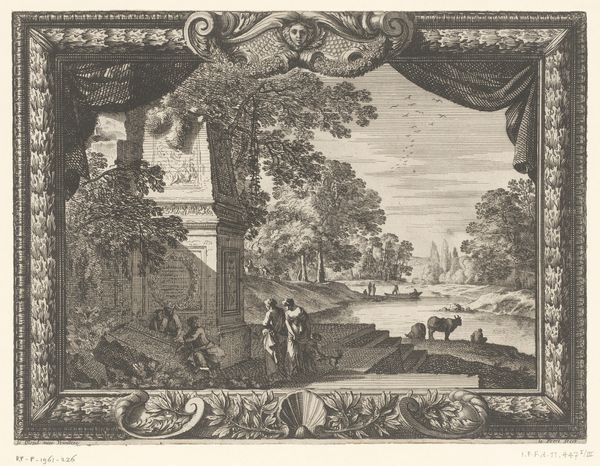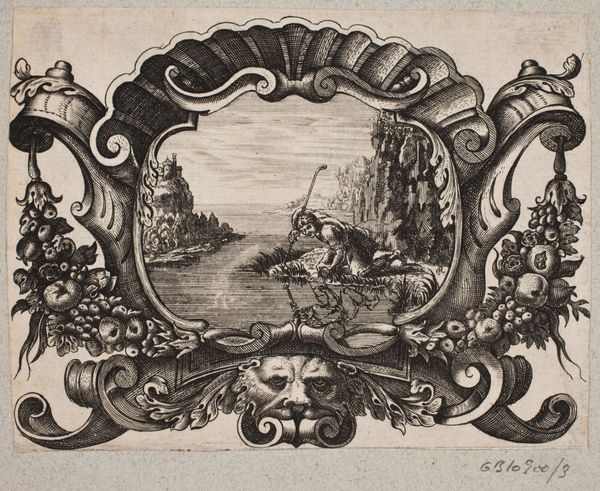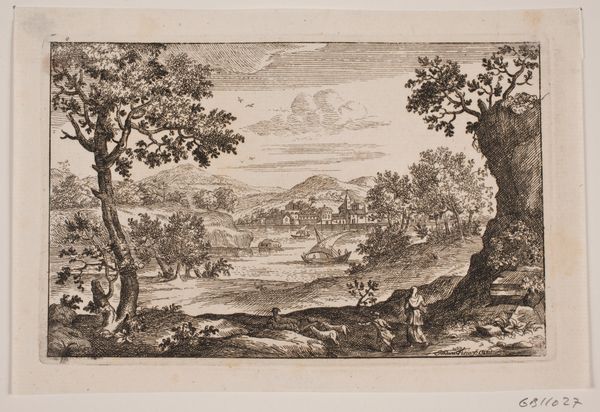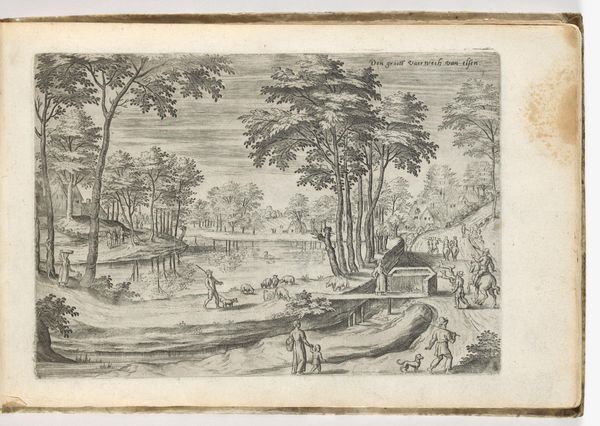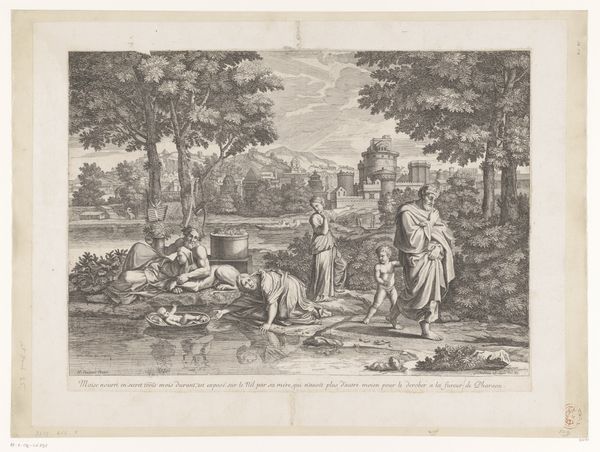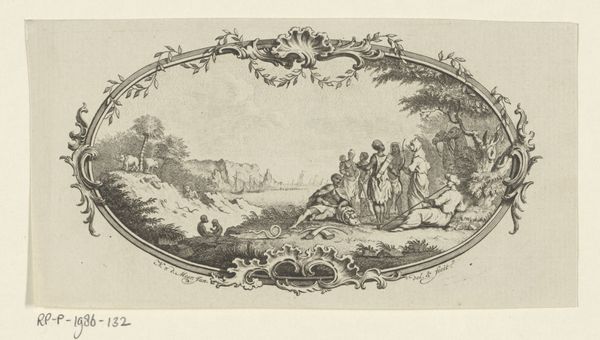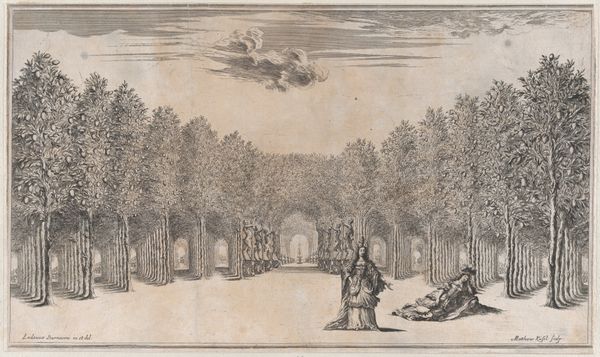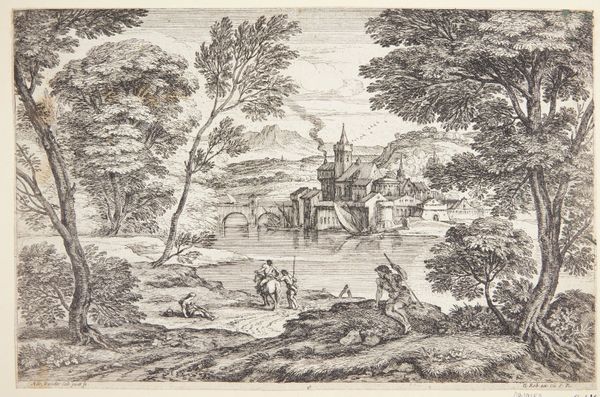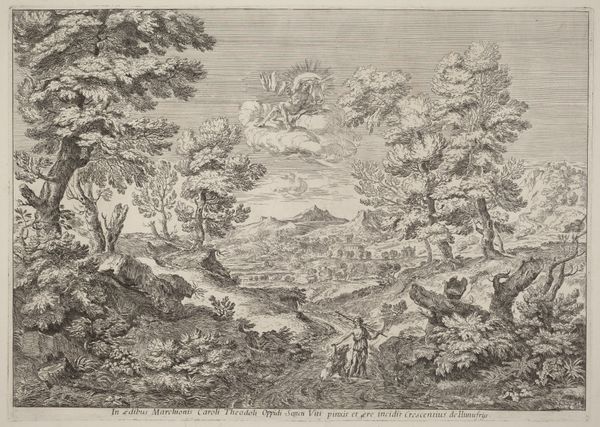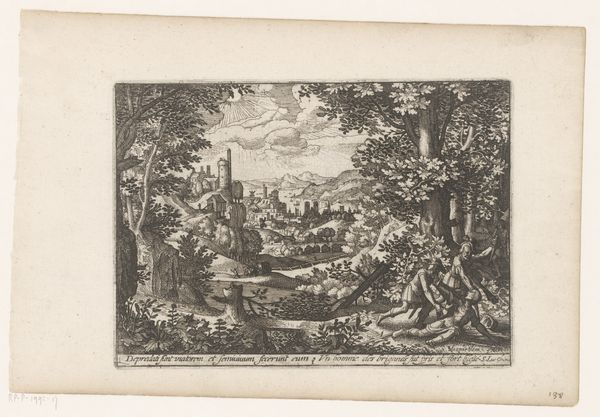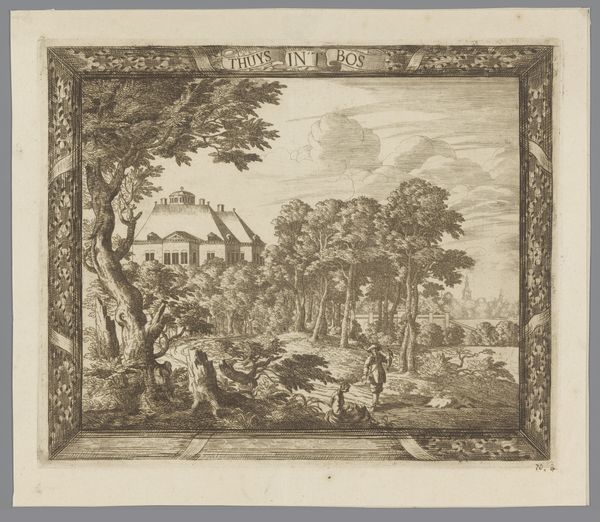
drawing, print, paper, ink, pen
#
drawing
#
pen drawing
# print
#
landscape
#
figuration
#
paper
#
ink
#
pen
#
history-painting
Dimensions: 175 × 230 mm
Copyright: Public Domain
Editor: We're looking at "Vignette of Tobias and the Angel," an ink drawing and print on paper, date unknown, housed here at the Art Institute of Chicago, profile by an Anonymous artist. I'm immediately struck by the elaborate framing device around the central scene; it almost overwhelms the narrative itself. What can you tell me about how its composition speaks to you? Curator: The juxtaposition is indeed the key. Consider first the framing: its ornate detail, the almost excessive display of vegetal forms, all meticulously rendered in pen and ink. It presents a contained world, a microcosm of artistic skill. Now, direct your attention to the vignette itself. What structural elements do you observe? Editor: Well, the figures are placed rather small within a sprawling landscape, creating a sense of distance, maybe even vulnerability. The light seems to be coming from the left, casting long shadows, and the architectural elements in the background—are those ruins? Curator: Precisely! The use of light and shadow establishes depth and volume, guiding the eye through the pictorial space. The artist employed ink washes to define the atmospheric perspective and to suggest forms fading into the distance. Consider the pen work: dense cross-hatching creating darker areas in the foreground contrasted with delicate, sparser lines evoking distant objects. This intentional juxtaposition invites questions. Editor: So the contrast between the wild nature within the scene and the controlled ornamentation around the borders emphasizes the scene's... fragility? That tension almost makes it more dramatic, don't you think? Curator: Precisely. Furthermore, observe how the composition itself echoes elements within the frame. Notice how lines repeat, echoing curvatures of foliage and gesturing figures into dialogue. It underscores visual rhyme to draw attention toward this delicate balance across thresholds: wilderness and garden or devotion and decoration; they both have shared design structures which complement, yet never completely unite under unified direction. What might be at stake, in this eternal divergence? Editor: That's fascinating! I hadn't thought about the repetition of line creating echoes, it seems like an attempt to harmonize themes into shared aesthetic language. I guess looking so closely at form can lead to deeper interpretive insights, or simply generate a cascade of compelling artistic insights. Curator: Precisely, precisely. Analyzing form not only shapes aesthetic preference. We gain analytical leverage over decoding artwork through visual analysis!
Comments
No comments
Be the first to comment and join the conversation on the ultimate creative platform.

